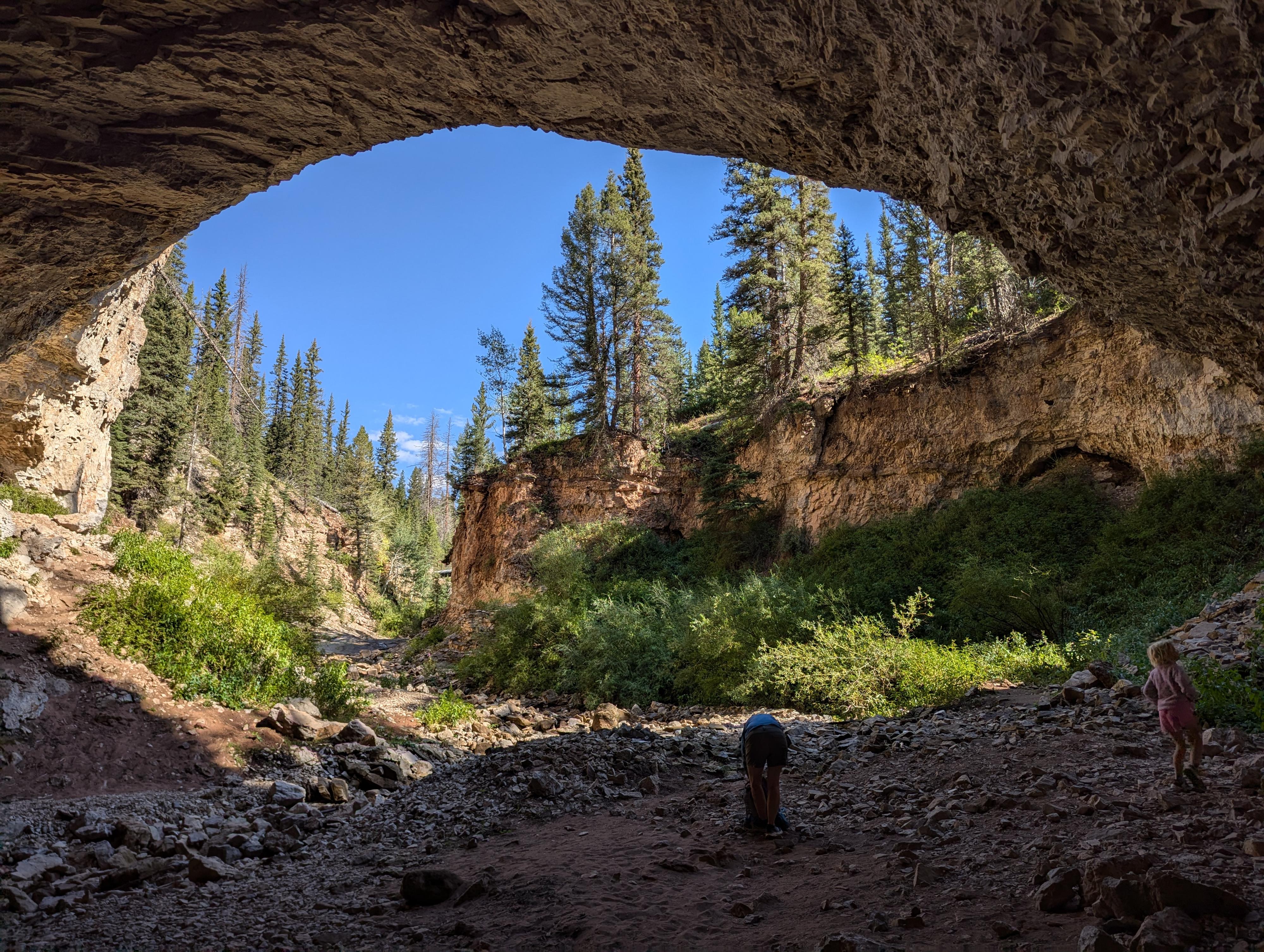 Caving Little Brush Creek Cave
Caving Little Brush Creek Cave
Vernal
Overview
|
Sat 27 | 8 |
Sun 33 | 15 |
Mon 36 | 18 |
Tue 39 | 22 |
Wed 38 | 24 |
| View Full Weather Details | ||||
|
Sat 27 | 8 |
Sun 33 | 15 |
Mon 36 | 18 |
Tue 39 | 22 |
Wed 38 | 24 |
| View Full Weather Details | ||||
Little Brush Creek Cave is currently the longest mapped cave system in Utah, with a total of about 7 miles of mapped passages. The cave, on the southern slope of the Uinta Mountains near Vernal, is well-known for its length, but also the ice formations that develop in the winter.
Why the ice? Little Brush Creek cave sits at a cool altitude of 8,160 feet. Its entrance, located at the bottom of a cul-de-sac canyon with a disappearing stream, acts as a cold trap, capturing dense, cold air descending from higher elevations. Without a lower exit, the cold air remains trapped inside. The entrance faces north and is deeply shaded, preventing warming from the sun. Inside the cave, significant ice forms as groundwater continues to drip even when temperatures outside drop below freezing, resulting in impressive ice formations that take a long time to melt.
Full Details
Login For Full Details!
- OR if you are not yet registered -
Register
(It is free and easy.)


